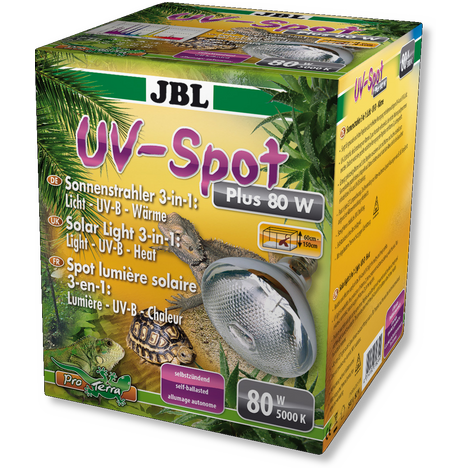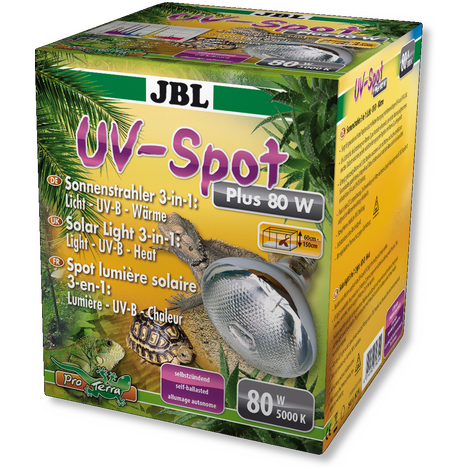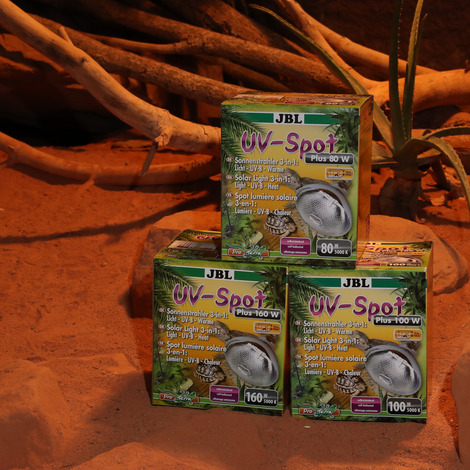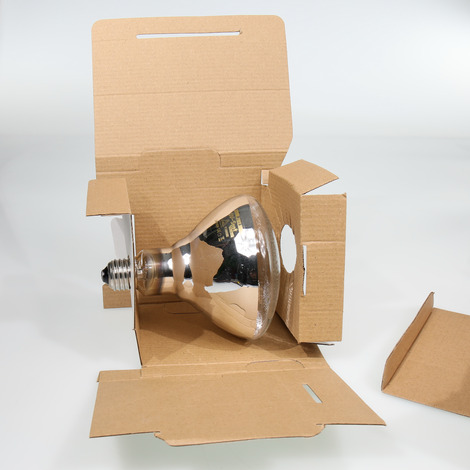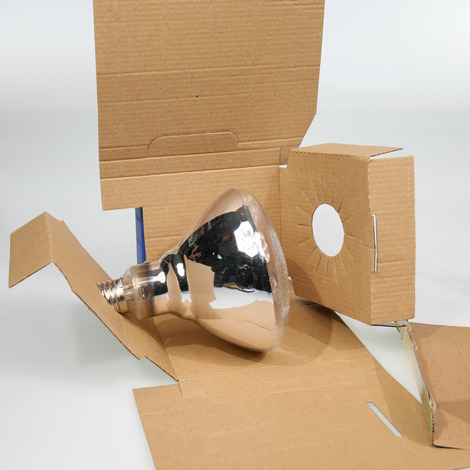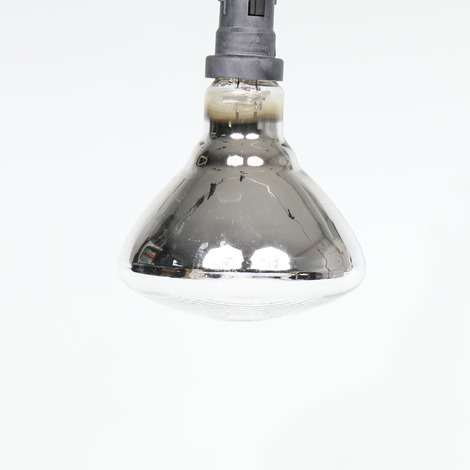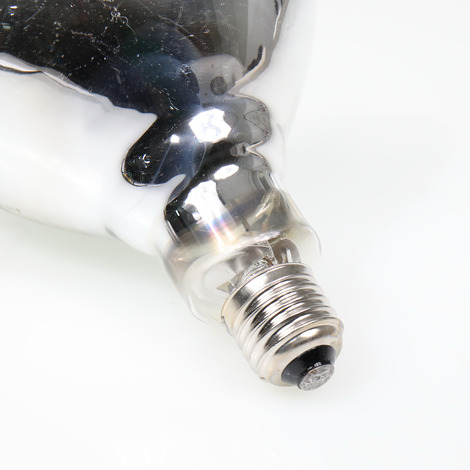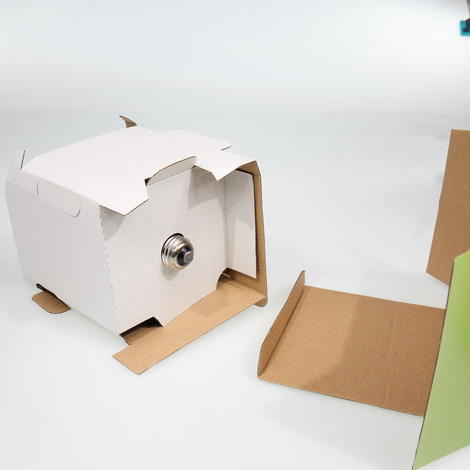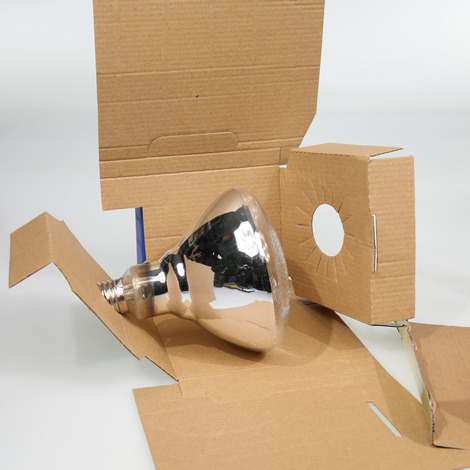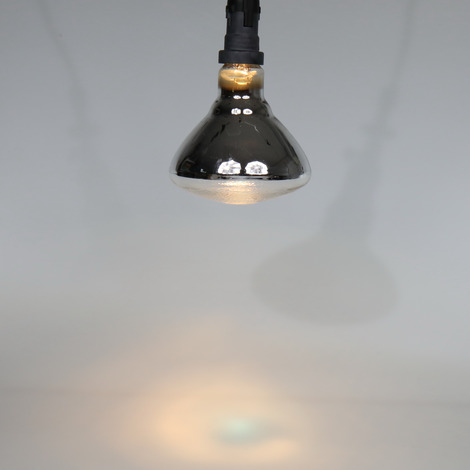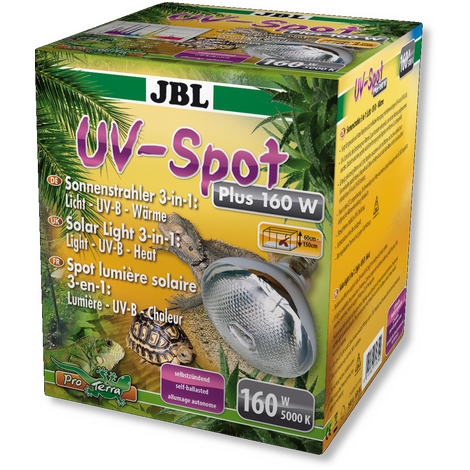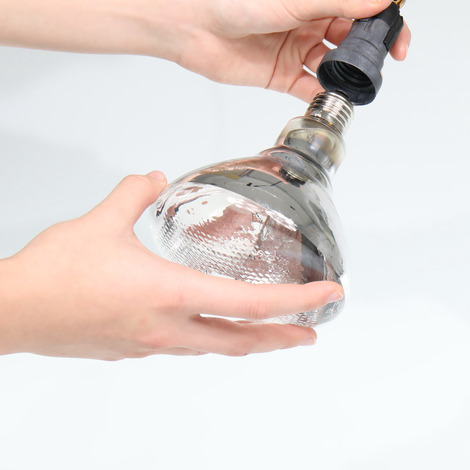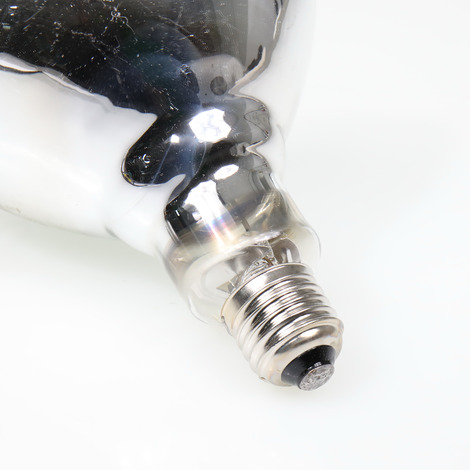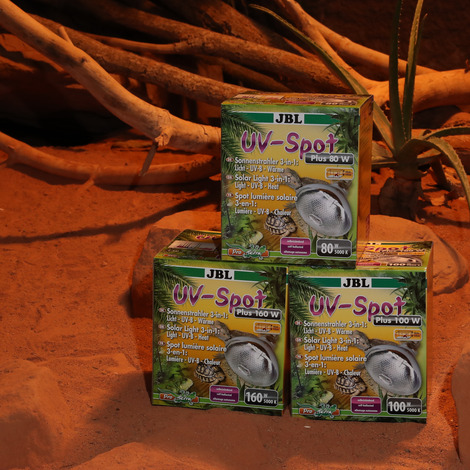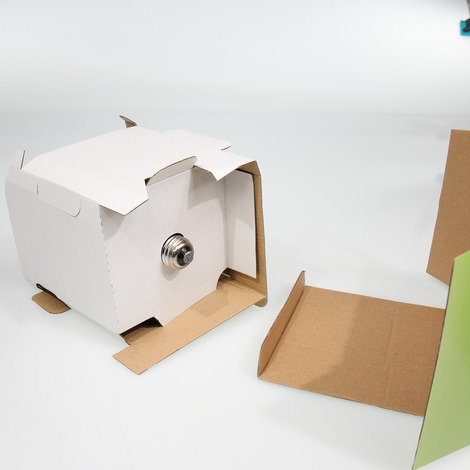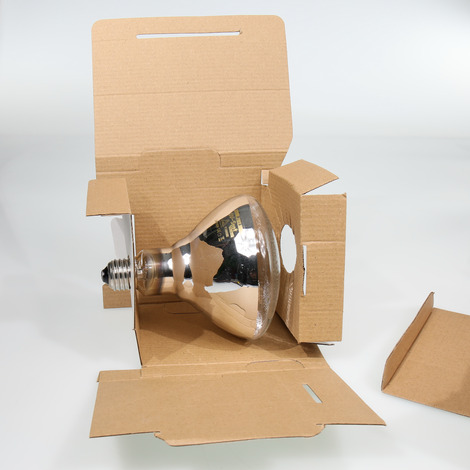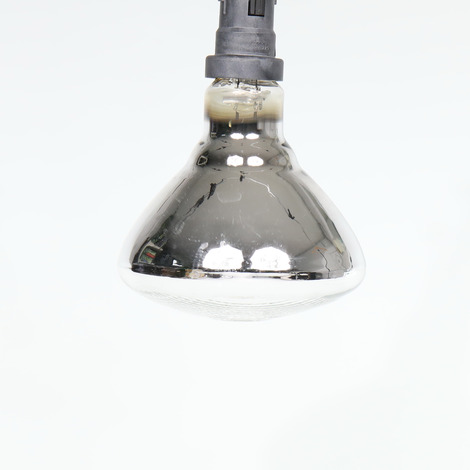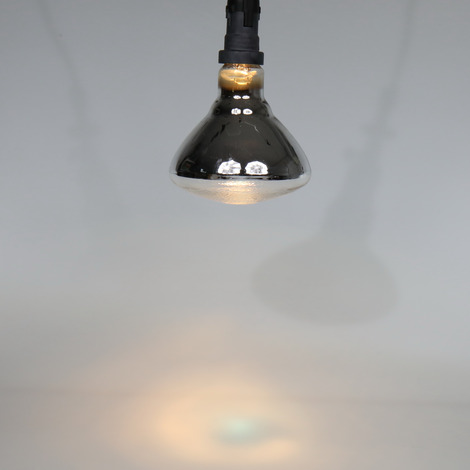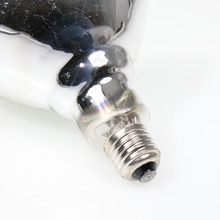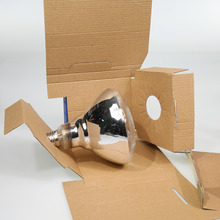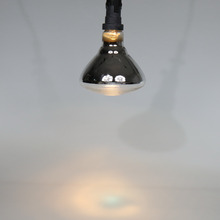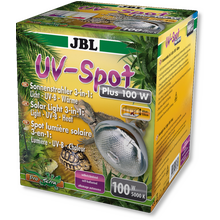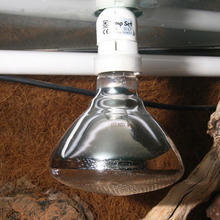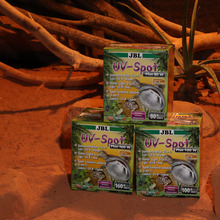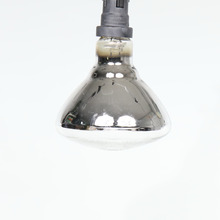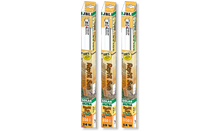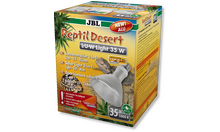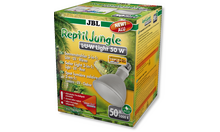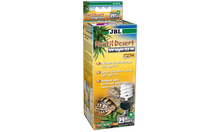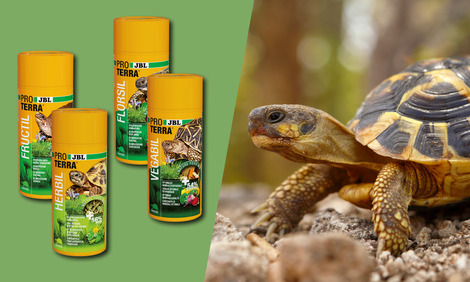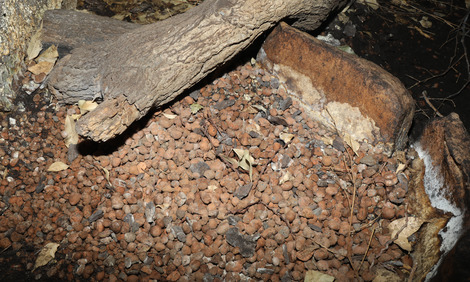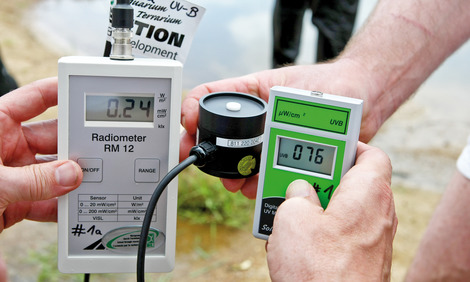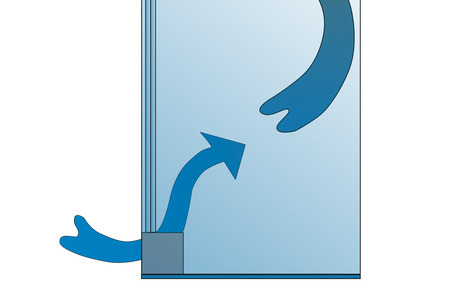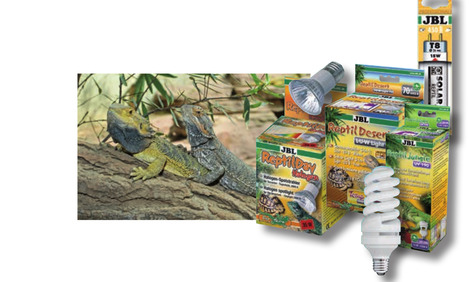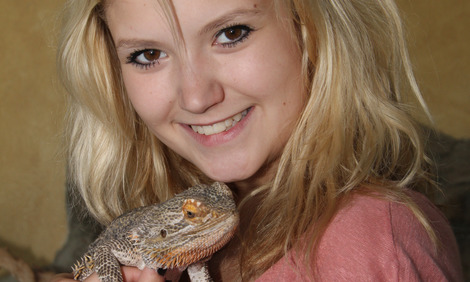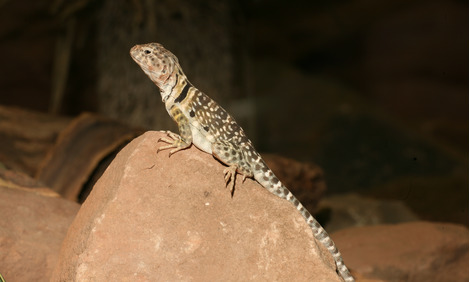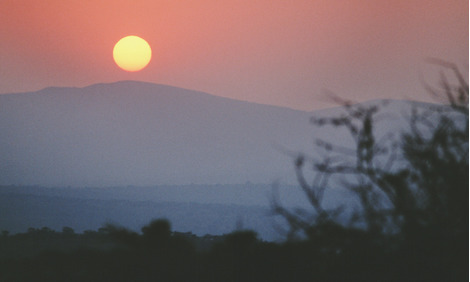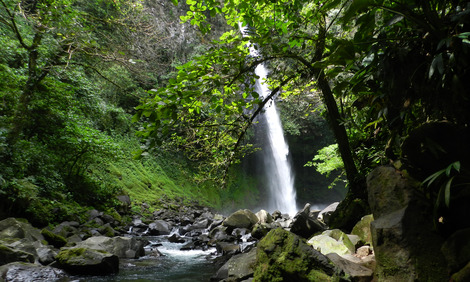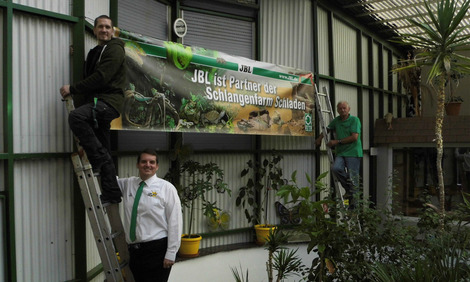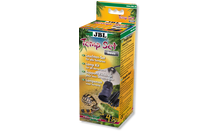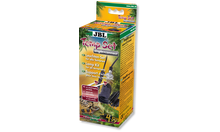Nature as a model:
Terrarium animals are cold-blooded animals, which are strongly dependent on light, and particularly on the quality and intensity of the light. Activity, food intake, digestion or rest phases are influenced by the change between day and night and the intensity of light. Depending on the light source, there are differences in the output and quality of the light.
Besides this, many terrarium animals associate light with heat and seek light places in the terrarium in order to „bask in the sun“. These considerations are especially important when choosing heating equipment for desert terrariums. There are differences in the yield and quality of light depending on the light source used. Fluorescent tubes, for example, provide a lot of light with little heat production, whereas light bulbs convert a major share of the energy taken up into heat and only a small share into light.
Depending on their country of origin, terrarium animals can require a lot or a little UV light for their well-being. UV-B stimulates the synthesis of Vitamin D3 from its preliminary stage Vitamin D2. UV-A stimulates pigmentation Don’t forget that glass absorbs around 50 % of the UV radiation, so always install the lamps inside the terrarium.
The JBL UV Spot Plus is ideal for terrarium animals which require sunlight, ultraviolet light (i.e. diurnal animals) and heat. It offers a full spectrum that simulates sunlight and includes UV-A and B radiation, along with heat emission for the terrarium. The temperature in the terrarium decreases after the lamps are switched off, thereby simulating the wanted nighttime drop in temperature.
For high terrariums it is important that the animals can approach the lamp in such a way that they receive enough UV radiation.
JBL UV-Spot plus
Extra strong UV spotlight with daylight spectrum for terrariums
- Healthy and lively reptiles: effective supply with essential UV-A and UV-B
- Produces heat, light with 5000 K and UV radiation (38 % UV-A, 7 % UV-B) at the same time
- Easy to install: Screw into E27 socket, e.g. JBL TempSet, self-igniting without ballast
- Optimal safety: thermal protection against overheating, no harmful UV-C radiation
- Package contents: 1 UV spotlight with daylight spectrum
